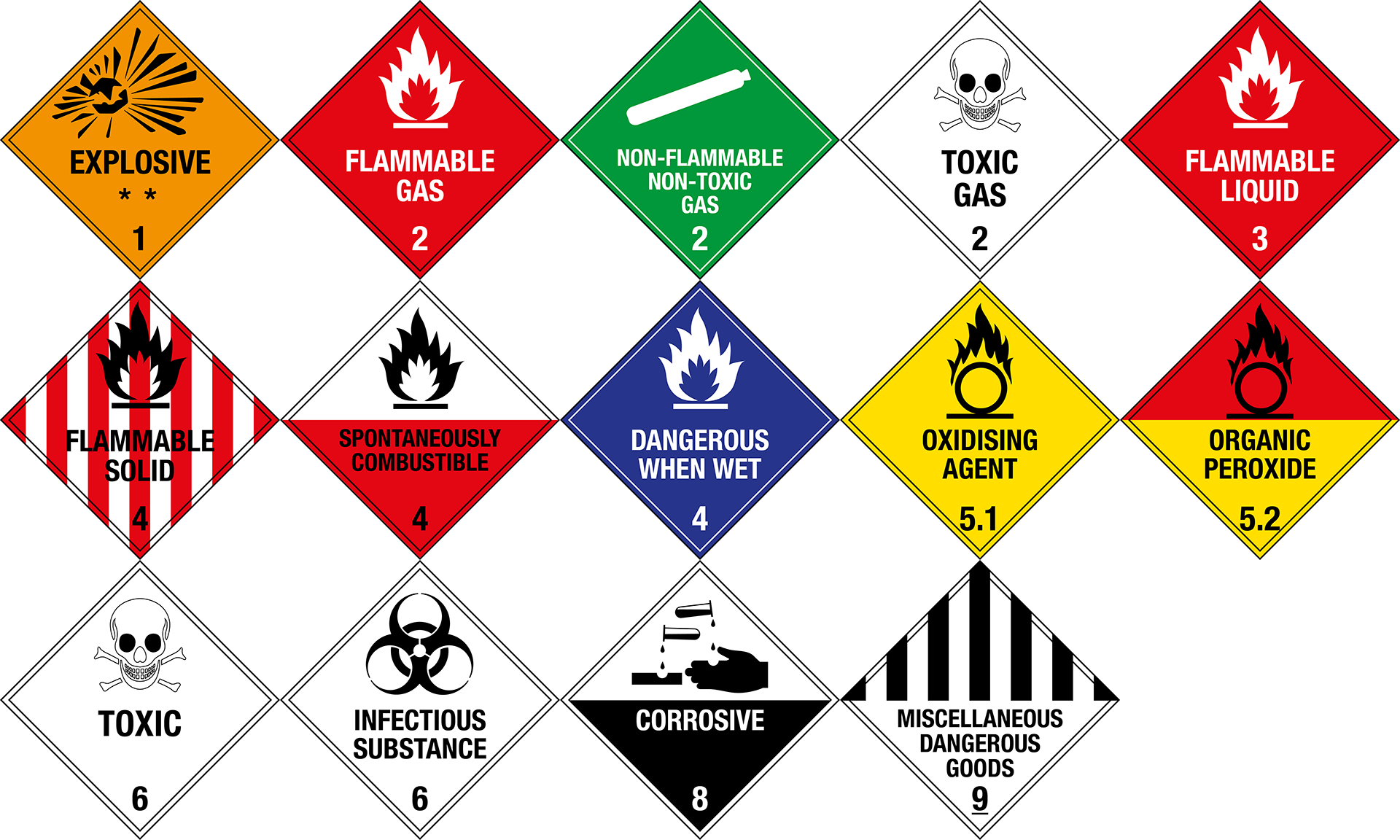Defining a dangerous good
Dangerous goods are substances and articles listed in the Australian Dangerous Goods (ADG) Code that have explosive, flammable, toxic, infectious or corrosive properties. They pose a risk to public safety, property or the environment.
A substance or article is a dangerous good for the purposes of r. 4 of the Dangerous Goods Safety (General) Regulations 2007 if it is listed in the ADG Code and is within any of the following classes or divisions:
- Class 1 (explosives)
- Class 2 (gases)
- Class 3 (flammable liquids)
- Class 4 (flammable solids; substances liable to spontaneous combustion; substances which, on contact with water emit flammable gases)
- Class 5 (oxidizing substances and organic peroxides);
- Division 6.1 (toxic substances)
- Class 8 (corrosive substances)
- Class 9 (miscellaneous dangerous substances and articles)
- or is:
- named or described in Schedule 1 of the Dangerous Goods Safety (Storage and Handling of Non-explosives) Regulations 2007
- sulphur in any form
- determined to be a dangerous good by the department’s Chief Officer in accordance with r. 12A of the Dangerous Goods Safety (Storage and Handling of Non-explosive) Regulations 2007.
What is not a dangerous good?
The following substances are not dangerous goods for the purposes of the Dangerous Goods Safety Act 2004:
- Division 6.2 (infectious substances)
- Class 7 (radioactive material)
- Substances not subject to the ADG Code because of a special provision.


